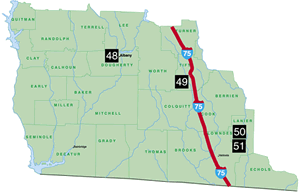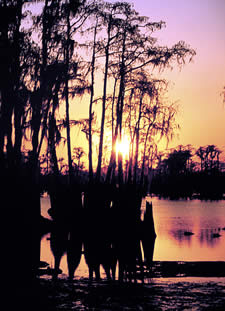
Wildlife Viewing Guide


|
Wildlife Viewing Guide |
 |

 Plantation
Trace
Plantation
Trace The natural landscape of southwest Georgia is dominated by pine forests, interspersed with specialized habitats such as Carolina bays, lime sinks, hardwood hammocks, and streams with broad floodplains. The original longleaf pine/wiregrass habitat type, characterized by tall, widely dispersed pines amidst a carpet of grass is now rare, but can still be found on some of the stately southern plantations of the area. It is also present on a few sites that are open to the public. This is one of the most fragile habitats in the southern United States. Although maintained by occasional naturally occurring fire, wiregrass is unable to recover from human disturbances to the soil and natural ground cover. The Chattahoochee and Flint Rivers converge here at Lake Seminole to form the Apalachicola as it begins its run to the Gulf of Mexico. Carolina bays, like Grand Bay, support a remarkable array of wildlife. Such wetland habitats, combined with the upland forests of the area, make this corner of Georgia most appealing to wildlife enthusiasts.
Read and add comments about this page